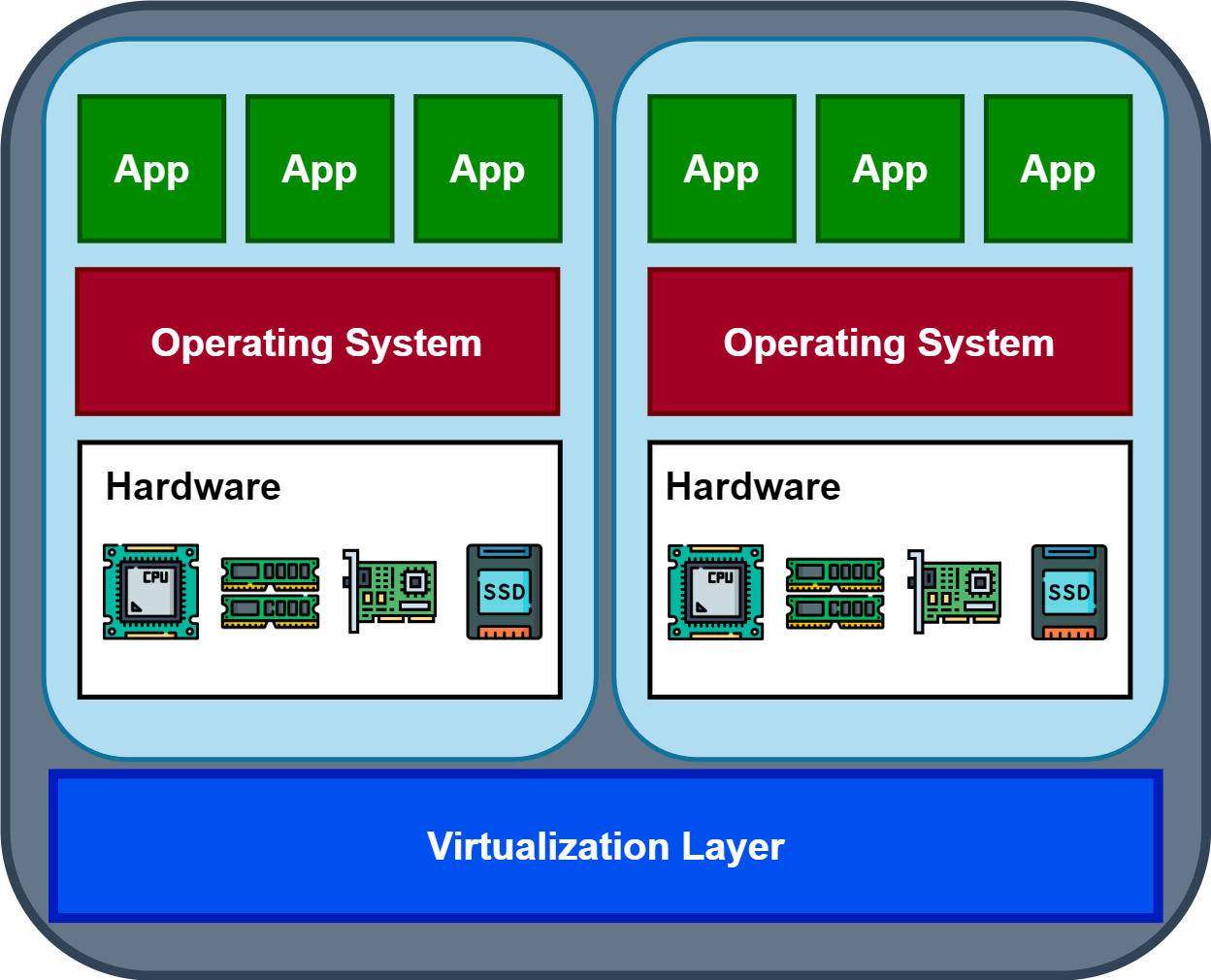Get the Most Out of Your Systems With Virtualization
Contents
Get the Most Out of Your Systems With Virtualization#
Enterprise data centers are made up of many servers, the majority of which are idle because the workload is directed to only a few servers on the network. This wastes expensive resources such as hardware, power, maintenance, and cooling requirements. Virtualization increases resource utilization by dividing a physical server into multiple virtual servers. These virtual servers appear and behave as if they were individual physical servers, each with its own operating system and applications.
Virtualization allows existing resources to be fully utilized, lowering overall business costs. Virtualization software (also known as a hypervisor) is used by businesses to create virtual machines, networks, desktops, and servers.
Virtualization software simplifies IT management and makes it more cost effective to own and operate. It brings about a variety of positive changes, such as lower hardware costs, improved disaster recovery solutions, increased IT agility, improved performance, and faster resource availability.
Understanding the various types of virtualization is essential for integrating it. Businesses can select the type of virtualization that best meets their needs.
Types of virtualization#
Desktop virtualization
Desktop virtualization occurs when the host server can run virtual machines via a hypervisor (a software program). A hypervisor can be installed directly on the host machine or over the operating system (like windows, mac, and linux). Virtualized desktops do not use the hard drive of the host system; instead, they run on a remote central server. This type of virtualization is beneficial to development and testing teams that need to develop or test applications on multiple operating systems.
Application virtualization
Desktop virtualization occurs when a hypervisor allows the host server to run virtual machines (a software program). A hypervisor can be installed on the host machine or on top of the operating system (like windows, mac, and linux). Virtualized desktops run on a remote central server rather than the host system’s hard drive. This type of virtualization is advantageous for development and testing teams that must develop or test applications on multiple operating systems.
Server virtualization
Server virtualization is the process of dividing a single server’s resources into multiple virtual servers. These virtual servers can function as standalone machines. Server virtualization enables businesses to run multiple independent operating systems (guests or virtual) with varying configurations on a single (host) server. The process also saves the hardware costs associated with maintaining a large number of physical servers, allowing businesses to streamline their server infrastructure.
Network virtualization
Network virtualization allows the entire computer network to be managed and monitored as a single administrative entity. Administrators can manage various network infrastructure elements such as routers and switches from a single software-based administrator’s console. Network virtualization contributes to network optimization in terms of data transfer rates, flexibility, reliability, security, and scalability. It raises the overall productivity and efficiency of the network. Administrators can more easily allocate and distribute resources while maintaining high and stable network performance.
Storage virtualization
Storage virtualization is the process of combining the physical storage of multiple network storage devices into a single storage device. Storage virtualization makes archiving, backup, and recovery tasks easier. It enables administrators to efficiently allocate, move, change, and set up resources across the organizational infrastructure.
Final words#
Organizations can use virtualization software, also known as hypervisors, to simulate hardware functionality and create multiple virtual computer systems. This enables IT departments to run multiple applications and operating systems on a single server. Virtualization software is used by businesses to efficiently manage and allocate resources to virtual machines. When using virtual machines, if one of them crashes, neither the physical hardware nor the other virtual machines are affected.
See also
Do you want to get practical skills to work in cybersecurity or advance your career? Enrol in MCSI Bootcamps

